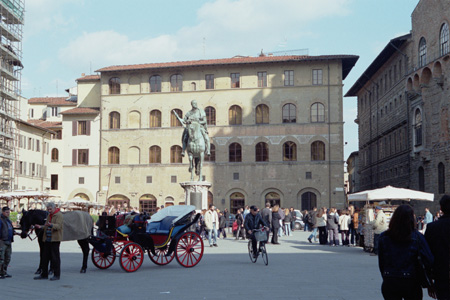
The Palazzo is to the right, as well as the Ufizzi Galleries. In the middle is Giambologna's statue of Cossimo I, first Medici Grand Duke.
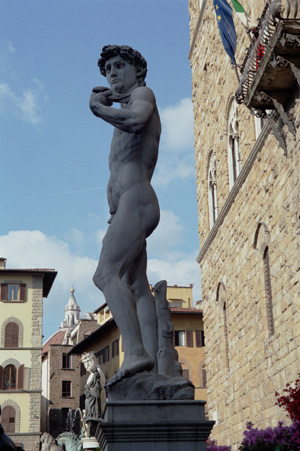
This was the original site of the David statue. The original was moved to the Galleria dell'Academia in the 19th century, and this copy put in its place.
Behind is a pretty goofy (I believe the technical term is "mannerist") statue of Neptune, with fountain.
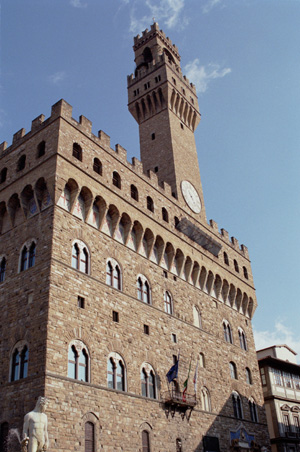
It doubles as Florence town hall.
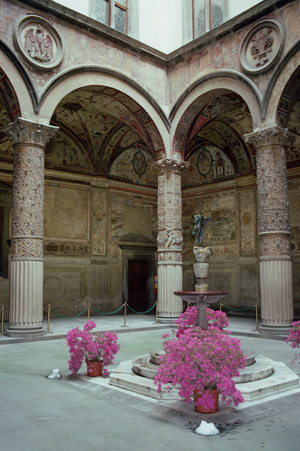
You can get this far without paying for admission.
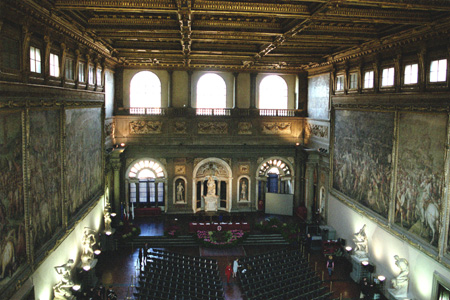
Stuffed with paintings and statues, even the panels on the ceiling have paintings. The murals on the side are by Vasari, and chronicle the history of Florence.
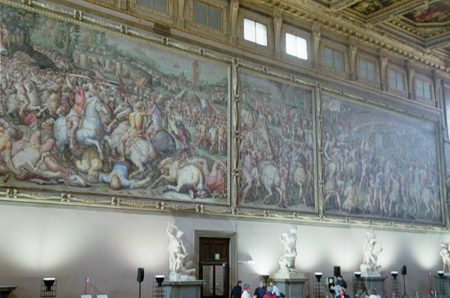
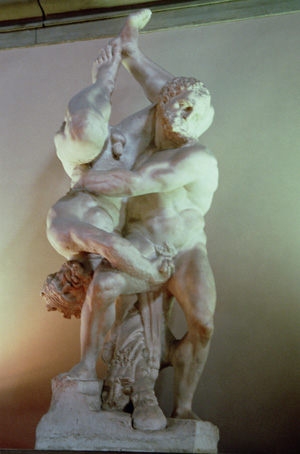
Winning is all! Perhaps this is where Macchiavelli got his inspiration.
John Wilson-Smith very kindly identified the statue. It's "Hercules and Diomedes" (1550), by Vincenzo de' Rossi (1525-1587), Florence. According to the story, Diomedes is an adversary, who Hercules throws to man-eating mares. Looks more like his main squeeze.